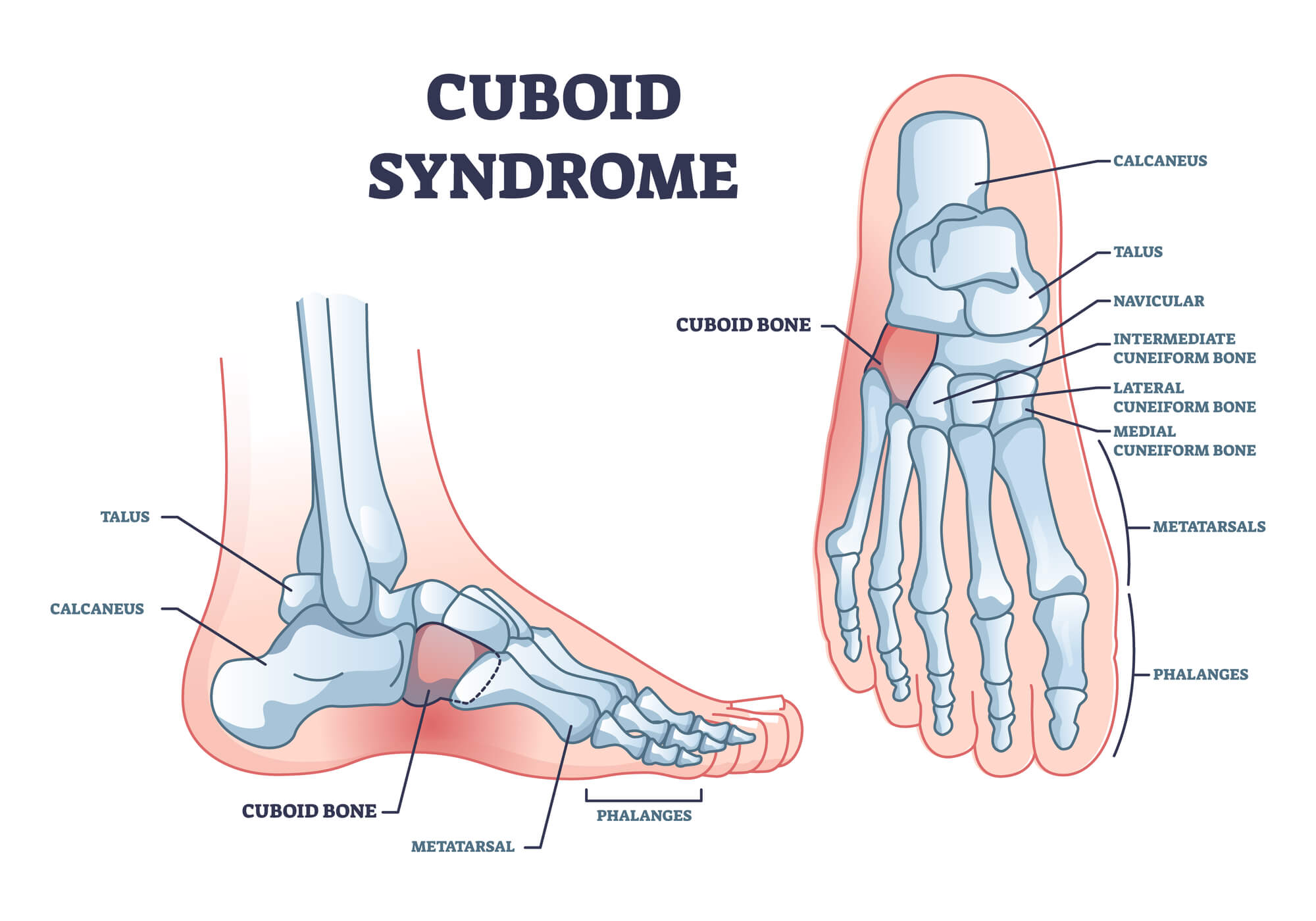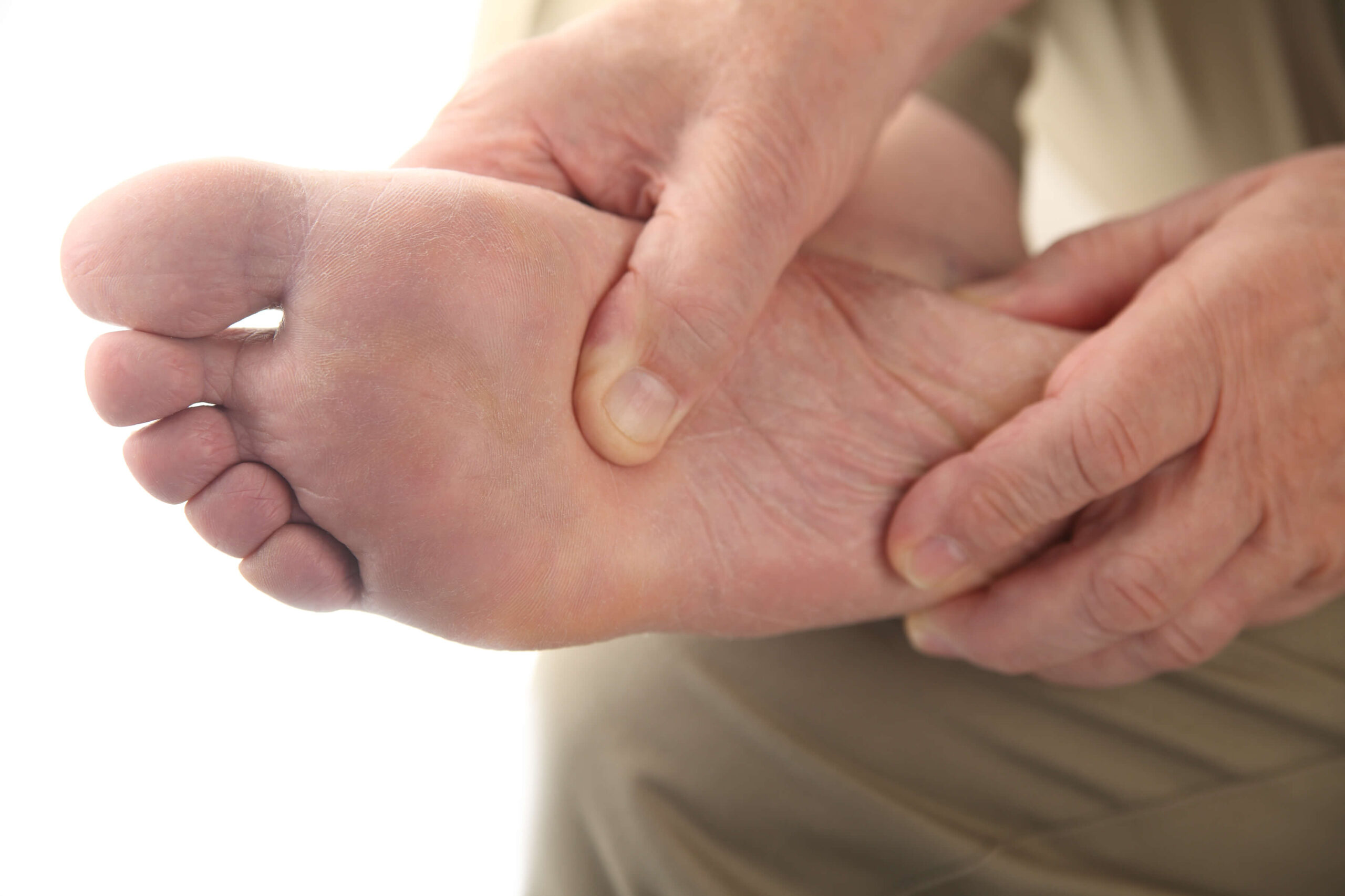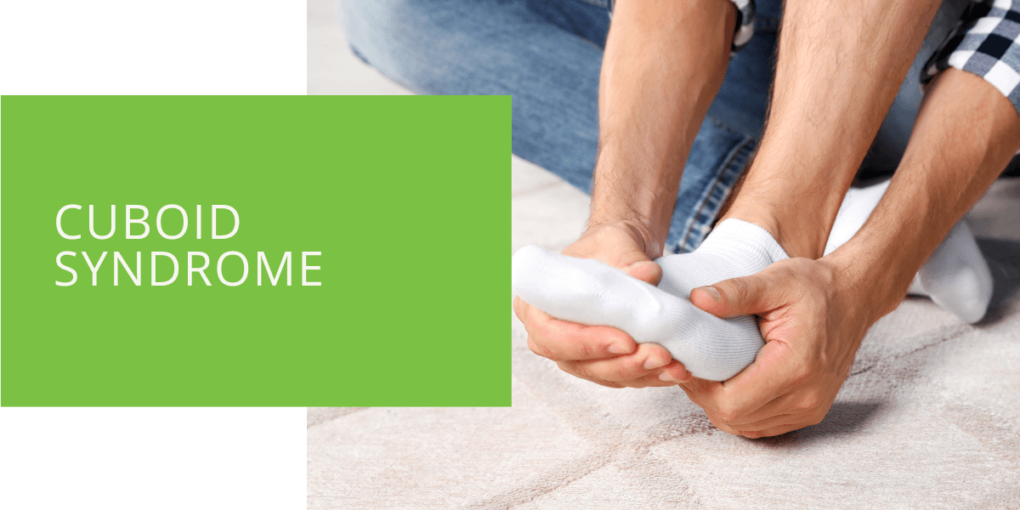Cuboid Syndrome: Causes, Symptoms & Treatment
Cuboid Syndrome is a condition that affects the cuboid bone, located on the lateral (outside) aspect of the foot and ankle. It is a common cause of foot pain and is often mistaken for an ankle sprain. This condition is caused by overuse and trauma to the foot and ankle, and it can be treated by a podiatrist or other foot and ankle specialist. This article will discuss the causes, symptoms, and treatment options for Cuboid Syndrome.
Causes of Cuboid Syndrome
Cuboid Syndrome is caused by overuse and trauma to the foot and ankle. The most common cause is overpronation when the foot rolls inward excessively during walking or running. This adds stress to the lateral aspect of the foot and can lead to injury. Other causes of Cuboid Syndrome include flat feet or high arches, which can change the alignment of the foot and lead to injury. Trauma or injury to the foot and ankle can also cause Cuboid Syndrome.
Symptoms of Cuboid Syndrome
The most common symptom of Cuboid Syndrome is pain on the outside of the foot and ankle. This pain may be accompanied by swelling or tenderness in the area. Difficulty walking or standing for long periods and instability in the foot and ankle are common symptoms.

Diagnosis and Treatment
To diagnose Cuboid Syndrome, a podiatrist will conduct a physical examination and may also order imaging tests such as an X-ray or MRI. Rest and immobilization are the initial treatment for Cuboid Syndrome. A podiatrist may also recommend physical therapy and exercises to strengthen the muscles and ligaments in the foot and ankle. Orthotic inserts or shoe modifications may also be recommended. In some cases, surgery may be necessary, but it is typically only considered a last resort.
Prevention and Management
To prevent and manage Cuboid Syndrome, it is important to wear proper shoes and inserts, stretch and strengthen the muscles and ligaments in the foot and ankle, maintain a healthy weight, and avoid high-impact activities. Taping can also be used to provide added support to the cuboid bone.
It is also important to note that the peroneus longus muscle runs alongside the cuboid bone, and if it is tight, it can pull the cuboid bone out of place, causing cuboid syndrome.

Conclusion
Cuboid Syndrome is a common condition affecting the cuboid bone, located on the foot and ankle lateral aspect. It is caused by overuse and trauma to the foot and ankle and can lead to pain, swelling, and instability in the foot and ankle. Treatment options include rest and immobilization, physical therapy and exercises, orthotic inserts or shoe modifications, and surgery as a last resort. To prevent and manage Cuboid Syndrome, it is important to wear proper shoes and inserts, stretch and strengthen the muscles and ligaments in the foot and ankle, maintain a healthy weight, and avoid high-impact activities.
If you are experiencing symptoms of Cuboid Syndrome, it is important to seek medical attention for proper diagnosis and treatment. With the right treatment, a full recovery from cuboid syndrome may be possible. It is also important to note that cuboid syndrome often requires manipulation of the cuboid bone and other bones in the foot, such as the heel bone, to achieve the best results.
FAQ
How do you get rid of cuboid syndrome?
The best way to get rid of cuboid syndrome is to seek treatment from a podiatrist or other foot and ankle specialist. Treatment options may include rest and immobilization, physical therapy and exercises, orthotic inserts or shoe modifications, and in some cases, surgery. It is also important to prevent and manage the condition by wearing proper shoes and inserts, stretching and strengthening the muscles and ligaments in the foot and ankle, maintaining a healthy weight, and avoiding high-impact activities.
How is cuboid syndrome caused?
Cuboid syndrome is caused by overuse and trauma to the foot and ankle. The most common cause is overpronation, when the foot rolls inward excessively during walking or running. This adds stress to the lateral aspect of the foot and can lead to injury. Other causes include flat feet or high arches, which can change the alignment of the foot and lead to injury, as well as trauma or injury to the foot and ankle.
How serious is cuboid syndrome?
Cuboid syndrome can range from mild to severe, depending on the individual case. In most cases, it can be treated with conservative methods such as rest, physical therapy, and orthotic inserts. However, if left untreated, it can lead to chronic pain and instability in the foot and ankle. In rare cases, surgery may be necessary.
How do you treat cuboid syndrome at home?
You can do some things at home to help alleviate symptoms of cuboid syndrome and speed up recovery. These include:
- Resting and avoiding high-impact activities
- Applying ice to the affected area
- Wearing proper shoes and inserts
- Stretching and strengthening exercises
- Taping the cuboid bone to provide added support
- Maintaining a healthy weight
It's important to note that self-treatment is not enough to fully heal from cuboid syndrome, and professional treatment should be sought.
Does cuboid syndrome ever go away?
Cuboid syndrome can often be treated and can go away with proper medical treatment, physical therapy, and lifestyle changes. However, in some cases, it may not fully go away and may require ongoing management to prevent recurrence or worsening symptoms.
What happens if cuboid fracture is left untreated?
If a cuboid fracture is left untreated, it can lead to chronic pain and instability in the foot and ankle. It can also lead to developing other conditions, such as arthritis, making it more difficult to treat in the future. It's important to seek medical attention if you suspect a cuboid fracture to prevent complications.

